
James FitzJames Butler, 2nd Duke of Ormonde, (1665–1745) was an Irish statesman and soldier. He was the third of the Kilcash branch of the family to inherit the earldom of Ormond. Like his grandfather, the 1st Duke, he was raised as a Protestant, unlike his extended family who held to Roman Catholicism. He served in the campaign to put down the Monmouth Rebellion, in the Williamite War in Ireland, in the Nine Years' War and in the War of the Spanish Succession but was accused of treason and went into exile after the Jacobite rising of 1715.
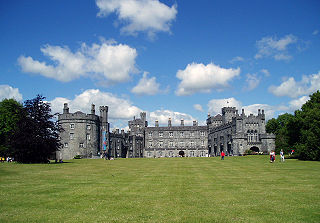
Kilkenny Castle is a castle in Kilkenny, Ireland, built in 1260 to control a fording-point of the River Nore and the junction of several routeways. It was a symbol of Norman occupation, and in its original 13th-century condition, it would have formed an important element of the town's defences with four large circular corner towers and a massive ditch, part of which can still be seen today on the Parade.

Viscount Clifden, of Gowran in the County of Kilkenny, Ireland, was a title in the Peerage of Ireland. It was created on 12 January 1781 for James Agar, 1st Baron Clifden. He had already been created Baron Clifden, of Gowran in the County of Kilkenny, in 1776, also in the Peerage of Ireland. The Viscounts also held the titles of Baron Mendip in the Peerage of Great Britain from 1802 to 1974 and Baron Dover from 1836 to 1899, when this title became extinct, and Baron Robartes from 1899 to 1974, when this title became extinct, the two latter titles which were in the Peerage of the United Kingdom. The interrelated histories of the peerages follow below.
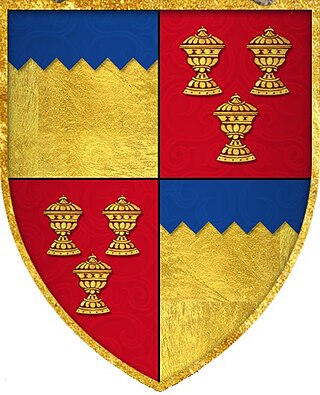
Piers Butler, 8th Earl of Ormond, 1st Earl of Ossory also known as Red Piers, was from the Polestown branch of the Butler family of Ireland. In the succession crisis at the death of Thomas Butler, 7th Earl of Ormond he succeeded to the earldom as heir male, but lost the title in 1528 to Thomas Boleyn. He regained it after Boleyn's death in 1538.

Gowran is a town located on the eastern side of County Kilkenny, Ireland. The historic St. Mary's Collegiate Church is located in the centre of Gowran close to Gowran Castle. Gowran Park race course and Golf Course are located one km from the centre of Gowran. Gowran is located on the R448 regional road where it is crossed by the R702 regional road. The town is in a townland and civil parish and barony of the same name.

James Wandesford Butler, 1st Marquess of Ormonde, was an Irish nobleman and politician. He was the second son of John Butler, 17th Earl of Ormonde and Frances Susan Elizabeth Wandesford. He was born at Kilkenny castle on 15 July 1774.
John Butler, 17th Earl of Ormonde, 10th Earl of Ossory (1740–1795) was an Irish peer and Member of Parliament (MP). He became a Protestant in 1764. He was an Irish MP, representing Gowran between 1776 and 1783, and Kilkenny City between 1783 and 1792. In 1791, his right to the peerage was acknowledged in the Irish House of Lords and he became the 17th Earl of Ormond.
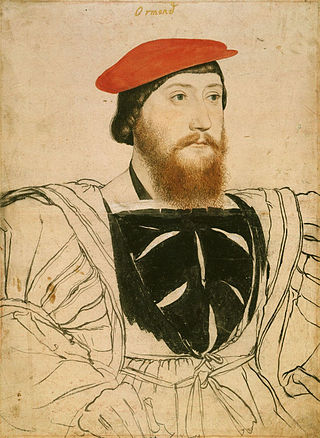
James Butler, 9th Earl of Ormond and 2nd Earl of Ossory, known as the Lame, was in 1541 confirmed as Earl of Ormond thereby ending the dispute over the Ormond earldom between his father, Piers Butler, 8th Earl of Ormond, and Thomas Boleyn, 1st Earl of Wiltshire. Butler died from poison in London.
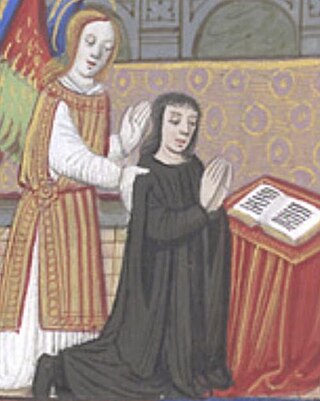
Thomas Butler, 7th Earl of Ormond PC was the youngest son of James Butler, 4th Earl of Ormond. He was attainted, but restored by Henry VII's first Parliament in November 1485, and the statutes made at Westminster, by Edward IV, which declared him and his brothers traitors, were abrogated.
James Butler, 3rd Earl of Ormond, was a noble in the Peerage of Ireland. He acceded to the title in 1382, and built Gowran Castle three years later in 1385 close to the centre of Gowran, making it his usual residence, whence his common epithet, The Earl of Gowran.
James Agar, 1st Viscount Clifden, was an Irish peer and politician and held the office of one of the joint Postmasters General of Ireland.

Margaret Butler, Countess of Ormond, Countess of Ossory was an Irish noblewoman and a member of the powerful and celebrated FitzGerald dynasty also known as "The Geraldines". She married Piers Butler, 8th Earl of Ormond, by whom she had three sons and six daughters.
Thomas Butler, Viscount Thurles was the son and heir apparent of Walter Butler, 11th Earl of Ormond (1559–1633), whom he predeceased. He lived at the Westgate Castle in Thurles, County Tipperary. He was accused of treason but drowned in a shipwreck off the Skerries in the Irish Sea, before he could be judged. He was the father of the Irish statesman and Royalist commander James Butler, 1st Duke of Ormonde.
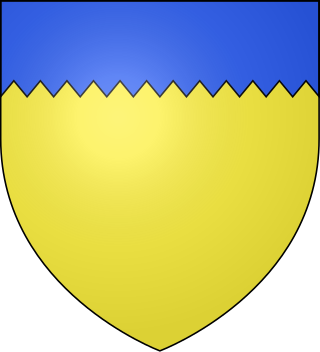
Butler is the name of a noble family whose members were, for several centuries, prominent in the administration of the Lordship of Ireland and the Kingdom of Ireland. They rose to their highest prominence as Dukes of Ormonde. The family has produced multiple titles such as Baron Cahir, Baron Dunboyne, Viscount Ikerrin, Viscount Galmoye, Viscount Mountgarret, Viscount Thurles, Earl of Carrick, Earl of Kilkenny, Earl of Ormond, Earl of Ossory, Marquess of Ormonde and Duke of Ormonde. Variant spellings of the name include le Boteler and le Botiller. The Butlers were descendants of Anglo-Norman lords who participated in the Norman invasion of Ireland in the 12th century. The surname has its origins in the hereditary office of "Butler (cup-bearer) of Ireland", originating with Theobald Walter, 1st Chief Butler of Ireland. The arms of later family members depicted three cups in recognition of their original office.
Henry Welbore Agar-Ellis, 2nd Viscount Clifden SA, styled The Honourable Henry Agar between 1776 and 1789, was an Irish politician.

Upper Ossory was an administrative barony in the south and west of Queen's County in Ireland. In late Gaelic Ireland it was the túath of the Mac Giolla Phádraig (Fitzpatrick) family and a surviving remnant of the once larger kingdom of Ossory. The northernmost part of the Diocese of Ossory and medieval County Kilkenny, it was transferred to the newly created Queen's County, now known as County Laois, in 1600. In the 1840s its three component cantreds, Clarmallagh, Clandonagh, and Upperwoods, were promoted to barony status, thereby superseding Upper Ossory.

Freynestown is a townland in the civil parish of Tiscoffin in the barony of Gowran, County Kilkenny, Ireland. Freynestown was anciently located in the Kingdom of Ossory and derives its name from the Cambro-Norman family of "de la Freyne.".

St. Mary’s Collegiate Church Gowran, also known as the Church of the Blessed Virgin of the Assumption, is a church in the centre of the town of Gowran, County Kilkenny, Ireland. The site is a National Monument in the care of the Gowran Development Association (GDA) and the Office of Public Works (OPW). The church and its family connections have been of huge importance to Gowran and further afield over the centuries. The church is a collegiate church, which means that the priests or chaplains attached to it lived in community together. The present church was not a monastery or an abbey; however experts believe the church was built on the site of an earlier monastery. The presence of an Ogham stone on the site, which is on display in the chancel, suggests there was a place of worship here dating back 2000 years to Celtic times or beyond.

Gowran is a barony in the east of County Kilkenny, Ireland. The size of the barony is 430.5 square kilometres (166.2 sq mi). There are 35 civil parishes in Gowran. The chief town today is Gowran. The barony contains the ecclesiastical sites of Kilfane and Duiske Abbey The barony of Gowran is situated in the east of the county between the baronies of Fassadinin to the north, the baronies of Kilkenny, Shillelogher and Knocktopher to the west, and the barony of Ida is to the south. It borders County Carlow to the east. The M9 motorway bisects the barony.
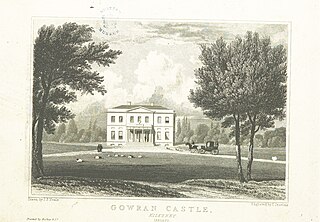
Henry Agar (1707–1746) was an Irish politician, and the father of the 1st Viscount Clifden and the 1st Earl of Normanton.
















